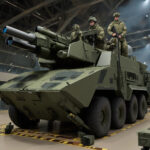In the world of fashion, the ability to innovate and respond swiftly to changing trends is crucial. Swedish retailer H&M has recognized this challenge and is striving to enhance creativity by fostering a culture of collaboration and autonomy among its design teams. By breaking down decision-making barriers and promoting an inclusive environment, H&M is empowering its employees, thus enabling them to contribute meaningfully to the product development process.
Founded in 1947, H&M has grown to become the second-largest fashion company globally, with over 4,000 stores spread across 77 markets. The organization employs approximately 143,000 individuals and boasts a design team of over 500 creatives. The company’s success can be attributed to its strong commitment to collaboration, which is increasingly being viewed as a critical factor in driving innovation.
Collaboration is the lifeblood of H&M’s creative processes. According to Eliana Masgalos, the Design Director for womenswear, her role involves daily collaboration across various departments, including marketing, product development, and visual design. Such interdisciplinary teamwork is essential not only for creating compelling products but also for ensuring a unified brand narrative across online and physical retail spaces. Masgalos emphasizes that creativity flourishes when everyone involved feels engaged and valued.
A recent structural shift within H&M involved reducing the number of decision-making layers within the design team. This change has provided creative teams with greater autonomy to steer their collections from concept through to execution. As Masgalos stated, “In the beginning, you are a bit scared because it is a big company, but at H&M, you can feel confident in your vision.” This sentiment reflects the mindset that H&M aims to foster—a culture of security and empowerment where innovative ideas can thrive and be explored freely.
Junior designer Robyn Clark also spoke about the significance of collaboration in making informed design decisions. She highlighted that every decision—from the design of a garment to its placement in a store—is made collectively, ensuring that diverse perspectives and expertise shape the final product. “We collaborate every day,” Clark remarked. “We all make decisions together,” reinforcing the idea that collective decision-making ultimately enhances product quality and team cohesion.
The emphasis on a supportive community is further mirrored in H&M’s approach to employee experience. Clark, originally from South Africa, noted how the company’s diverse culture fosters an environment where everyone can contribute unique perspectives. H&M hosts various community initiatives, providing platforms for employees from diverse backgrounds to connect and engage in shared activities, effectively creating a sense of belonging.
Trend forecaster Dennis Claesen pointed out that his team plays a vital role in informing H&M’s creative process by identifying macro and micro trends across the fashion landscape. The trend forecasting team collaborates with various stakeholders, including design teams and management, to ensure that insights translate into actionable strategies. “We share these presentations to support material and color choices,” Claesen explained, emphasizing how data-driven collaboration enriches the company’s offerings.
H&M’s management encourages creative decision-making by fostering an environment where employees feel supported and empowered. Claesen noted, “Different departments can help you if you’re stuck, so there are people you can check in with.” This support system not only enables employees to take calculated risks but also reduces the pressure typically associated with high-stakes creative roles.
The results of this innovative collaboration model are already evident. Following the recent launch of their Autumn/Winter 2024 collection, the energy within the company is palpable. Staff members have expressed excitement not only about the product itself but also about the creative possibilities that lie ahead. Masgalos reflected on this enthusiasm, “It wasn’t just about the clothes or the images, it was inspiring because it gave us an idea of what we can be going forwards.” This shared sense of purpose and creativity invigorates the work environment, reinforcing H&M’s commitment to continuous growth and innovation.
The case of H&M serves as a reminder that collaboration is not merely a buzzword; it is a crucial strategy for fostering creativity and securing competitive advantage in an increasingly fast-paced industry. By investing in collaborative structures and promoting autonomy among its talented teams, H&M does more than just respond to market demands—it positions itself as a leader in the fashion sector, ready to inspire and innovate in the years to come. As the fashion landscape shifts, the organization remains committed to providing its employees with the tools, processes, and support needed to thrive creatively.












